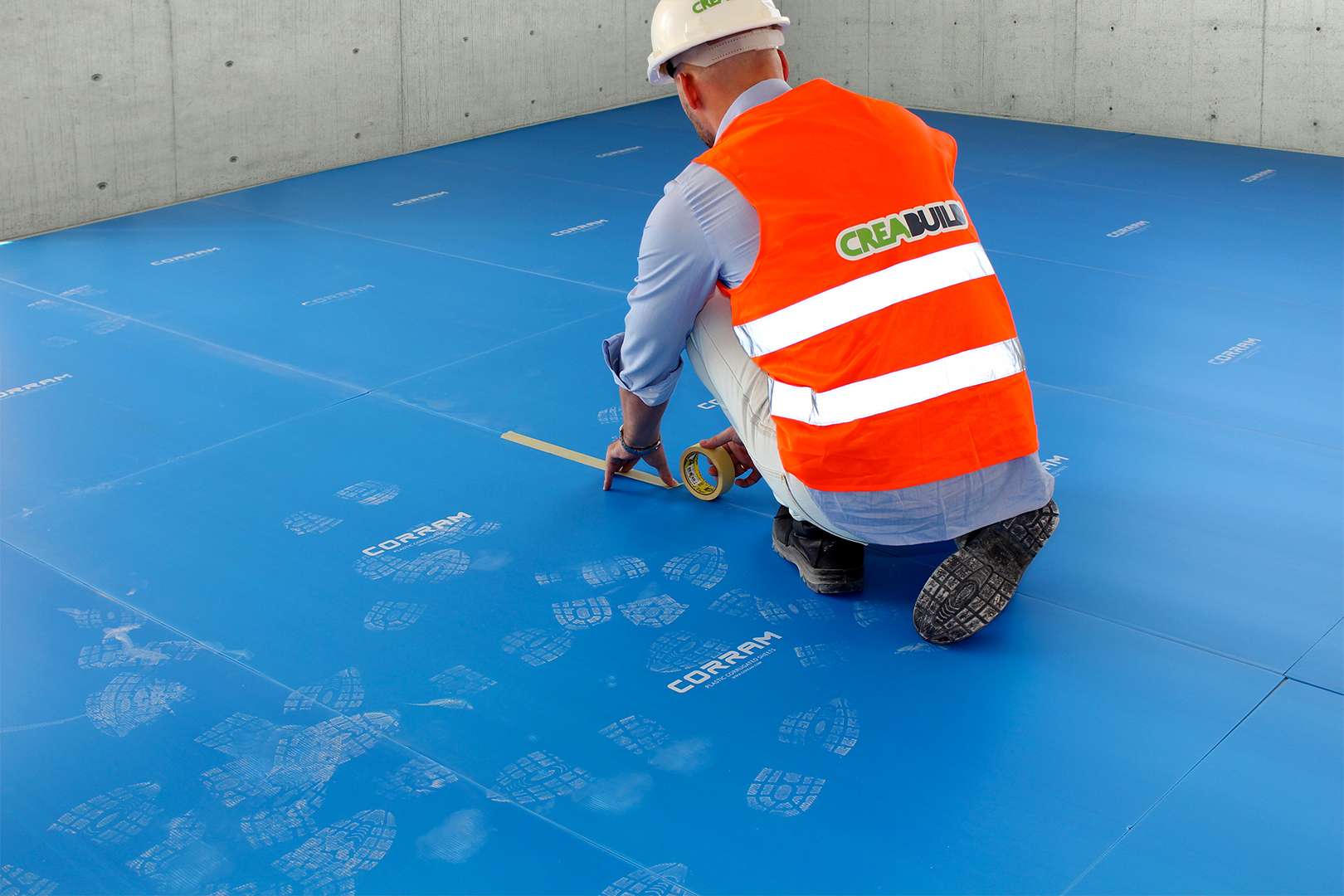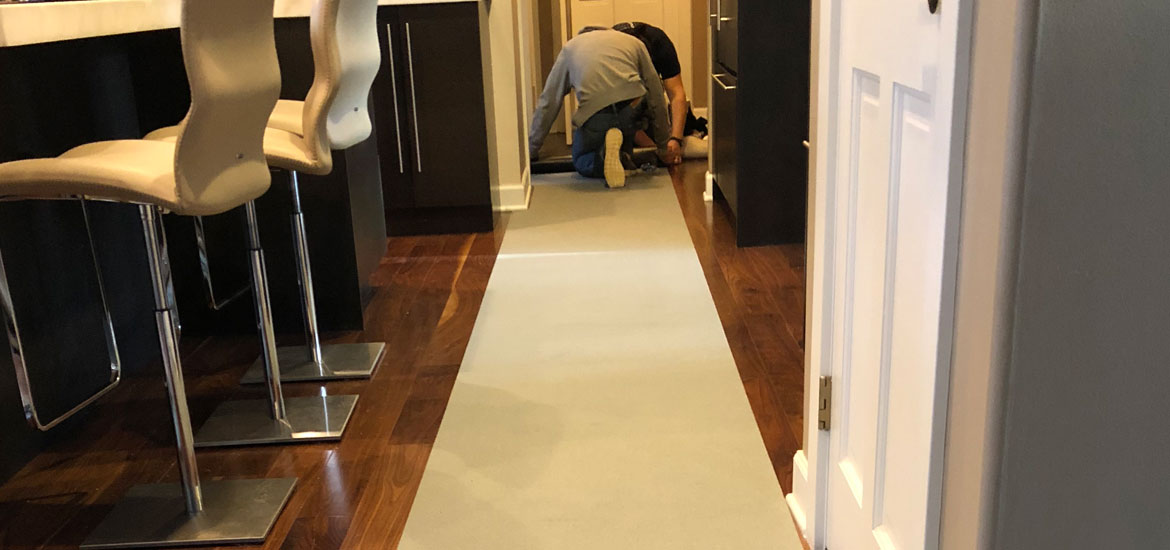I. Introduction
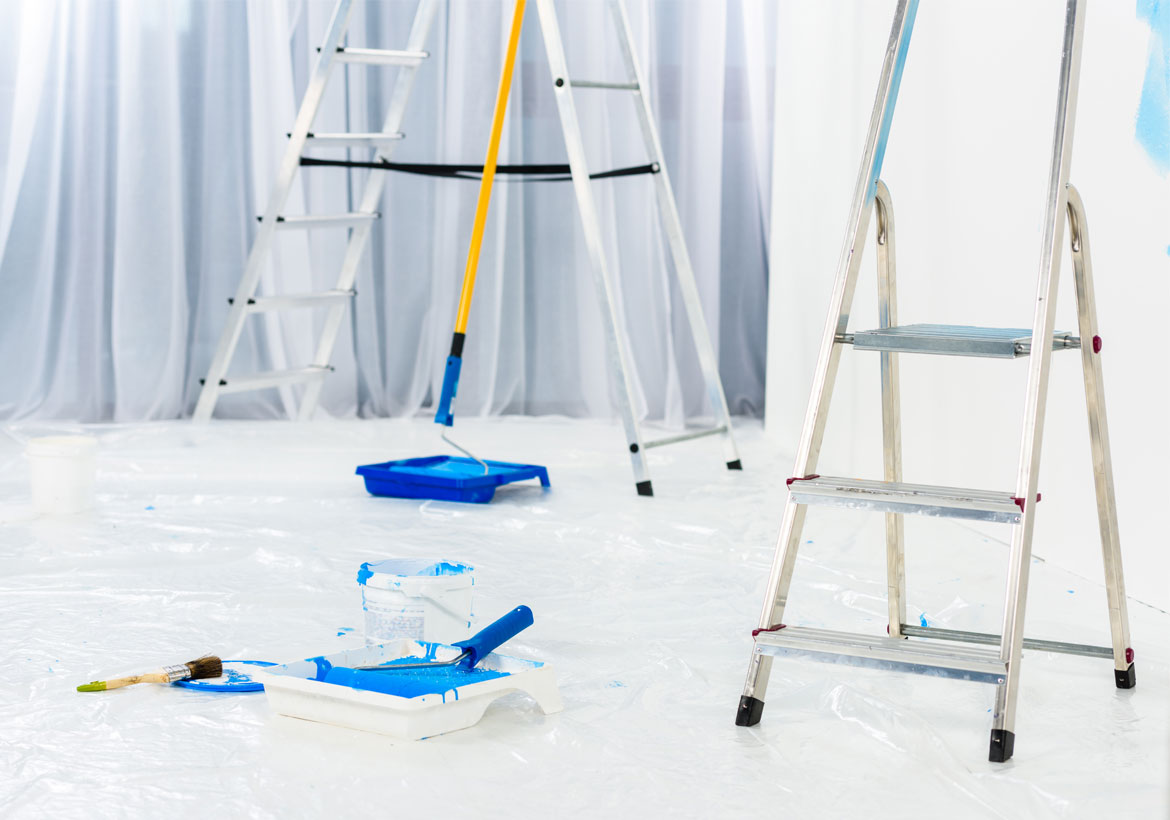
A. Importance of floor protection during construction During any construction or renovation project, floors are particularly vulnerable to damage. Protecting floors during construction is essential to preserve their aesthetics, structural integrity, and prevent costly repairs or replacements. This article will provide valuable tips and techniques for successfully protecting various types of flooring materials during the construction process.
B. Overview of the article’s focus on preserving floors during the construction process This article aims to educate readers on the potential risks and damages that floors can face during construction. It will also discuss the different types of flooring materials and their vulnerability to damage. The article will provide practical guidance on preparing floors for construction and implementing protective measures to ensure their preservation.
II. Understanding the Impact of Construction on Floors
A. Potential risks and damages to floors
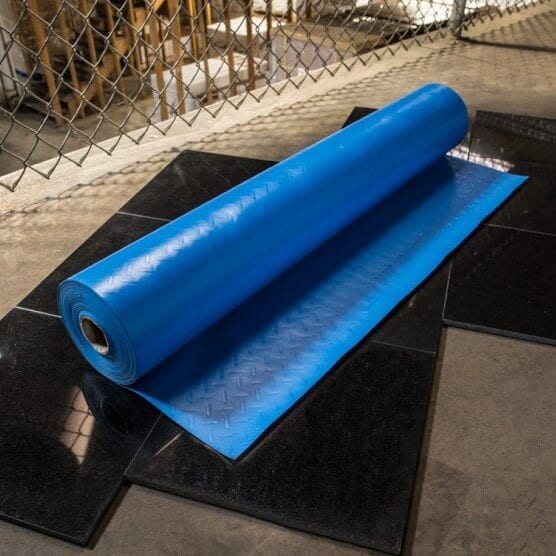
- Scratches and abrasions: Heavy foot traffic, dragging of equipment or materials, and sharp objects can cause scratches and abrasions on the floor surface.
- Chemical spills and stains: Construction materials, paints, and solvents can accidentally spill onto floors, leading to permanent stains or discoloration.
- Heavy impacts and dents: Dropping heavy tools or equipment, rough handling of materials, or impacts from machinery can result in dents or cracks on the floor.
B. Types of flooring materials and their vulnerability to damage
- Hardwood floors: Hardwood is prone to scratches, dents, and water damage. Proper protection is key to preserving its natural beauty and durability.
- Laminate flooring: Although more resistant to scratches, laminate flooring can still be damaged by impacts, moisture, and chemical spills.
- Tile and stone floors: Tile and stone are susceptible to cracks, chipping, and stains. Extra care must be taken during construction to prevent damage.
- Carpeted floors: Carpets can easily absorb dirt, moisture, and debris during construction, resulting in permanent stains and damage to the carpet fibers.
III. Preparing Floors for Construction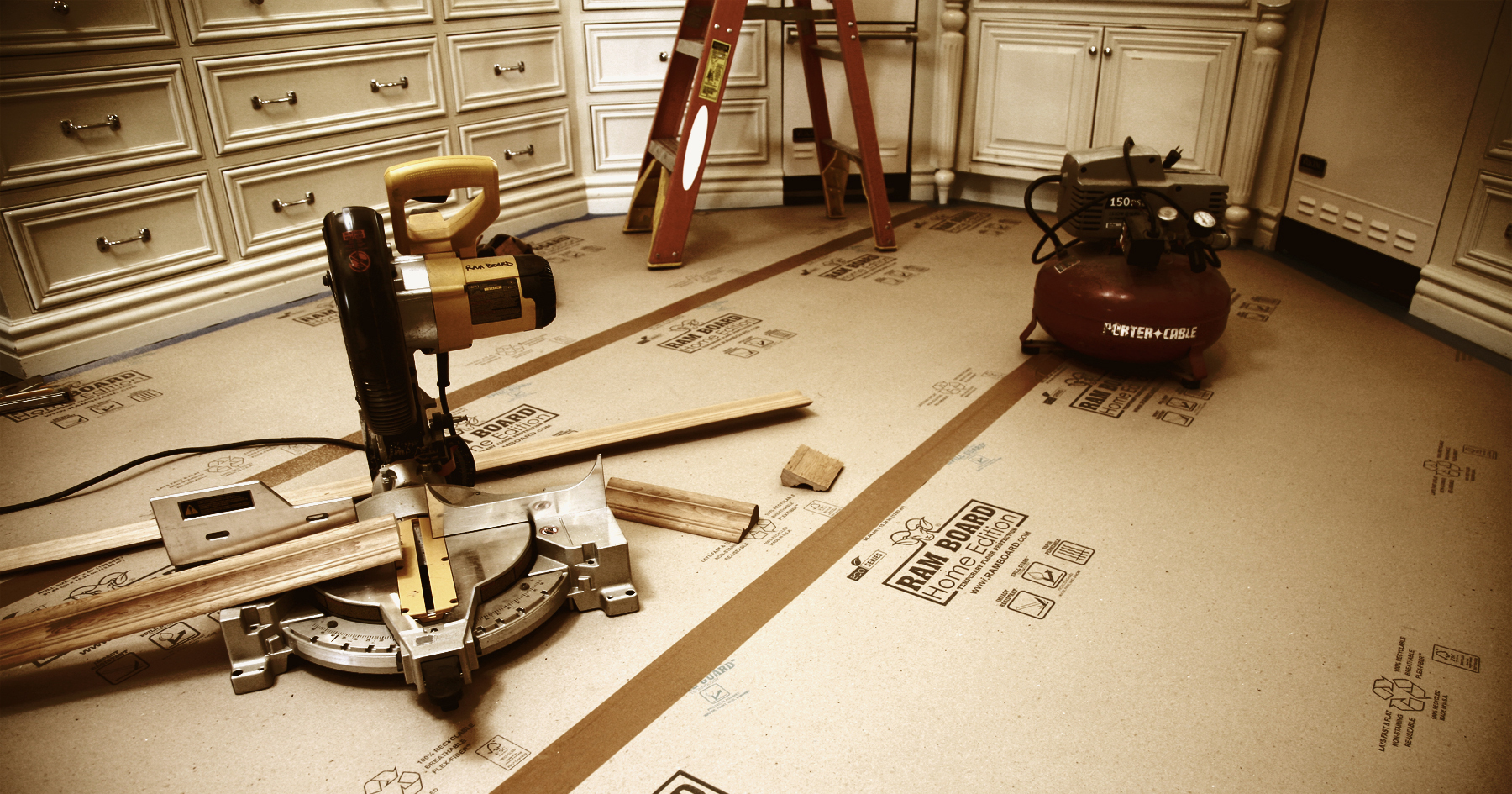
A. Clearing the area and removing obstacles Start by removing any furniture, fixtures, or valuables from the area to be worked on. This will minimize the risk of accidental damage or obstruction during construction. B. Temporary removal of fragile or valuable flooring If possible, consider removing fragile or high-value flooring materials such as hardwood or tile during construction. Store them safely to protect them from damage. C. Identifying high-risk areas and planning protective measures Evaluate the construction site and identify areas prone to high foot traffic, heavy equipment usage, or potential spills. Plan protective measures accordingly to minimize the risk of floor damage.
Ⅳ. Protective Measures for Different Flooring Types
A. Hardwood and Laminate Floors
- Using rosin paper or building paper: Lay down rosin paper or building paper as a protective barrier between the construction activities and the hardwood or laminate floors. These inexpensive materials provide a protective layer against scratches, spills, and debris.
- Applying temporary adhesive film: Another effective option is to use temporary adhesive film specifically designed for hardwood or laminate floors. This film provides a durable barrier against foot traffic, tools, and construction materials. Be sure to follow the manufacturer’s instructions for proper application and removal.
- Utilizing protective mats or carpets: Place protective mats or carpets strategically in high-traffic areas and work zones to absorb impact and prevent damage. These mats can be easily removed and cleaned, making them a convenient and effective solution for floor protection.
B. Tile and Stone Floors
- Installing temporary plywood or Masonite boards: For tile and stone floors, temporary plywood or Masonite boards can provide excellent protection. These materials create a sturdy layer between the construction activities and the delicate flooring surface.
- Using surface protection tapes or adhesive films: Surface protection tapes or adhesive films designed for tile and stone floors offer a reliable protective solution. These tapes are easy to apply and remove, leaving no residue or damage on the flooring.
- Avoiding heavy machinery or equipment directly on the tiles: To prevent cracking or chipping, it is essential to avoid placing heavy machinery or equipment directly on the tiles. Use plywood sheets as a buffer to distribute the weight evenly and protect the floor.
C. Carpeted Floors
- Using temporary carpet covers or adhesive films: Carpet covers or adhesive films designed for carpeted floors are effective in preventing spills, stains, and dirt accumulation. These covers can be easily installed and removed, providing hassle-free floor protection.
- Placing heavy-duty plastic sheets or tarps over the carpet: In areas prone to heavy foot traffic or potential spills, placing heavy-duty plastic sheets or tarps over the carpet provides an additional layer of protection. Ensure that these coverings are securely fastened to avoid tripping hazards.
- Avoiding spills and minimizing foot traffic on carpeted areas: While spills are inevitable during construction, taking preventive measures such as providing designated eating and drinking areas away from carpeted spaces can significantly reduce the risk of stains. Additionally, minimizing foot traffic by establishing clear pathways can prevent unnecessary wear and tear on the carpet.
Ⅴ. Best Practices for Floor Protection During Construction

A. Covering high-traffic areas and pathways: Identify the high-traffic areas and pathways within your construction site and cover them with protective materials. Regularly inspect these coverings and replace them as needed to maintain optimal floor protection.
B. Regularly inspecting and maintaining protective measures: Throughout the construction process, conduct regular inspections to ensure that the protective measures are intact and effectively safeguarding the floors. Promptly address any issues or damages to prevent further harm.
C. Communicating and educating construction crew about floor protection: Proper communication with the construction crew is essential for ensuring the implementation of floor protection measures. Educate the crew about the importance of floor protection, best practices, and the consequences of neglecting these measures.
Ⅵ. Post-Construction Floor Maintenance
A. Removing protective coverings and cleaning the floors: Once the construction or renovation is complete, remove all protective coverings carefully to avoid damaging the floors. Thoroughly clean the floors, following the manufacturer’s instructions and using appropriate cleaning solutions for each flooring type.
B. Inspecting for any damages and addressing them promptly: Conduct a meticulous inspection of the floors for any signs of damage, such as scratches, stains, or cracks. Promptly address these issues by consulting professionals or employing suitable repair methods to prevent further deterioration.
C. Restoring floors to their original condition, if necessary: In cases where the floors have experienced significant damage or wear, consider restoring them to their original condition. This may involve refinishing hardwood floors, replacing damaged tiles, or deep-cleaning and re-stretching carpets.
Conclusion
Protecting different types of flooring during construction is crucial to preserve their beauty and functionality. By implementing the appropriate protective measures and incorporating best practices, you can minimize damage and keep your floors in top condition. Additionally, post-construction floor maintenance, including thorough cleaning and timely repairs, ensures the longevity of your floors. Remember, proper floor protection not only enhances the aesthetics of your space but also adds value to your property.
